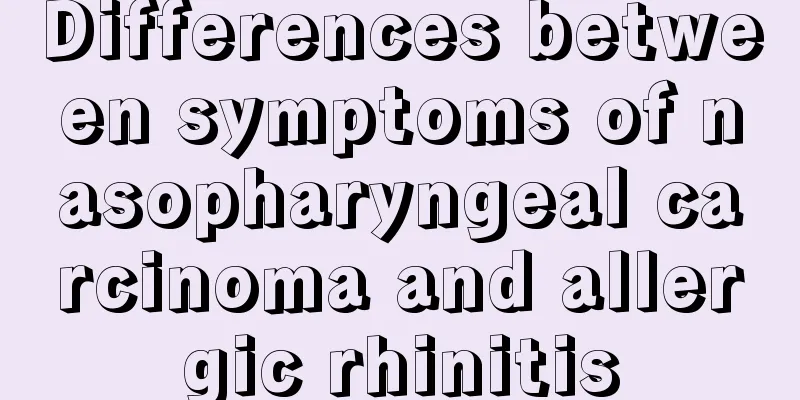What should I do if I have mild facial paralysis?

|
Mild facial paralysis is not uncommon in life, and this problem causes great distress to patients. Therefore, when these symptoms appear, you should pay attention to the correct conditions. You can do more eye closing training, finger training, and nose lifting training. 1. Eye closing training The function of closing eyes is mainly completed by the movement and contraction of the orbicularis oculi muscle. When training to close the eyes, ask the patient to close the eyes gently at first, and close both eyes at the same time 10 to 20 times. If the eyelids cannot be closed completely, you can use the tip of the index finger to gently massage along the infraorbital edge when the whites of the eyes are exposed, and then close the eyes forcefully 10 times. This will help restore the eyelid closure function. 2. Nose-lifting training The nose-lifting exercise is mainly completed by the movement and contraction of the levator labii superioris muscle and the depressor nasalis muscle. Nose lifting training can promote the recovery of motor function of the nasal depressor muscles and lip levator muscles. A small number of patients do not know how to do the nose lift exercise, so they should pay attention to applying force towards the nose during training. It is a care method for facial paralysis. 3. Teeth showing training The teeth showing movement is mainly completed by the contraction of the zygomatic major and minor muscles, the levator anguli oris muscles and the zygomatic muscles. The motor dysfunction of these four muscles is the main cause of crooked corners of the mouth. Instruct the patient to move the corners of the mouth to both sides at the same time to avoid exerting force on only one side and forming a habitual deflection movement of the corners of the mouth. 4. Cheek puffing training Cheek puffing training helps to restore the motor function of the orbicularis oris and buccinator muscles. When air leaks from puffing up your cheeks, pinch the orbicularis oris muscle on the affected side up and down with your hands to perform cheek puffing exercises. The patient was able to perform cheek puffing exercises, indicating that the motor functions of the orbicularis oris and buccinator muscles could return to normal, and the symptoms of water leakage while brushing, drooling, and food stagnation disappeared. This method helps prevent and treat contracture of the quadratus lip superioris muscle. 5.5. Eyebrow raising training The completion of eyebrow raising movement mainly relies on the movement of the frontal belly of the occipitofrontalis muscle. In disuse, mild and moderate lesion-type facial paralysis, the motor function of the frontal belly of the occipitofrontalis muscle is easiest to recover. The patient can be asked to lift the eyebrows on the healthy and affected sides, which will help restore the eyebrow lifting function. |
<<: Can eye myasthenia gravis be cured?
>>: What are the treatments for optic nerve atrophy?
Recommend
How to clean oil stains on clothes
Oil stains on clothes have always been a problem ...
What factors usually cause colorectal cancer?
Among the many cancer diseases, colorectal cancer...
Can corns grow on the palms of your hands?
Corns are a type of fleshy boil that grows on the...
Can I eat sushi when I have a cold
Cold is a disease that we often get rid of, but m...
Correct pen holding posture for writing
The pen-holding posture is very important for stu...
How to prevent rotavirus enteritis?
Because the shape of rotavirus under an electron ...
What's wrong with my neck twitching
The health of the neck is very vulnerable to dama...
Is there any cure for brainstem hemorrhage
The human brain is one of the most important comp...
How to effectively prevent lung cancer? 5 ways to keep lung cancer away from you
Effective protective measures should be taken in ...
Symptoms of cinnabar poisoning
You should not use medicines indiscriminately in ...
How to deal with itchy shingles scabs?
Herpes is a very common skin disease in life, and...
How to treat acute pancreatitis
Pancreatitis is a common clinical disease, and ac...
What's wrong with the smell of feces?
We all know that in ancient times, wanting to def...
What does the DTP vaccine prevent? This is what the DTP vaccine is all about.
Parents who have given birth to babies know that ...
What is the reason for anal protrusion
Some people will find that their anus is turned o...









